|
Continuing with our updated series of marketing blogs, first posted in march 2021  It doesn’t matter how many people you engage with on social media, if the messages you send them aren’t clear, they won’t buy your book. So that is the subject of this week’s blog – coming up with clear marketing messages. There are a number of ways to create content and creative people are coming up with new ways all the time. But we’ll start with the basics and you can get creative yourself once you have got the idea. If you’d like to do some training in this topic, our old friends at Future Learn offer a 2 week online course (it can be completed in a single day if you wanted to) that is (yay) free and you can sign up for it anywhere in the world. We recommend it. For this blog we’re going to look at two specific types of content.  You will probably have heard of “the elevator Pitch”. If not, this blog tells you all about them. Elevator pitches are very useful on social media, to get quick, concise messages across about your book. If you haven’t read that blog and don’t know what an elevator pitch is, it’s a short description of your book, designed to catch the attention of a potential audience in a very short space of time – typically the duration of a ride in an elevator, hence its name. One of the things we see quite often on Twitter is authors saying they've been asked about their book and suddenly become tongue-tied, they panic and fear they may even sound stupid. And that is where the elevator pitch comes into its own. Imagine you are at a party or a BBQ and you find yourself in conversation with a stranger. “What do you do for a living?” They ask.  “I’m an author.” you reply (because you are if you want to sell your books, no matter what you actually do to earn a living). “Oh, that’s interesting.” They say, because this is a party/BBQ and they feel obliged to make small talk. “What sort of books do you write?” “Well, my latest book is …” And that is your elevator pitch, basically; your book’s description in thirty to sixty seconds. Then you pause. If their eyes have glazed over and they change the subject, let it drop – don’t bore them to death with it. But if they say “Oh, that sounds intriguing,” they may ask you more and you can feel free to elaborate until they run away screaming. "that elevator speech is your basic marketing message" I could try to come up with my own recipe for creating the killer elevator pitch, but there are so many available on the internet already. But the elevator pitch is your basic marketing message for use on social media because it is concise and easy to understand. If you can get it down to 280 characters, then it’s ideal for Twitter, but if you can’t then it can be used on other social media. 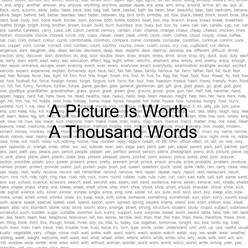 Here’s a trick for Twitter. Turn your message into a picture. Use Powerpoint (other graphics packages are available), put your elevator pitch into a text box, insert the cover image alongside it and save it as a .jpg (image) file. All you need to do then is upload it into your Tweet and add a link so that anyone interested can click through to its retail page on whatever platform you are using for sales. But, of course, you can also use the same “slide” for other social media. But you don’t have to stop there. If you can set up a series of slides you can join them together and make them into a video using packages such as “moviemaker”. Or you can make some actual videos with yourself or family members in them. These are ideal for use on Youtube and Instagram (you could actually video yourself in a party/BBQ situation, in conversation with a “party guest”). There are also providers on Fiverr.com that will create short videos for you, using your book cover and elevator pitch as the basis. Take a look at the one we had created for one of our titles, Operation Absolom, on our "Books" tab In this respect you are only limited by your own imagination. But you’re an author, so you have a great imagination. I have what is known as a “good face for radio”, which is a euphemism for being ugly, so I wouldn’t want to be in a video, but there’s nothing wrong with my voice, so I can do a voiceover for a video made up of slides. 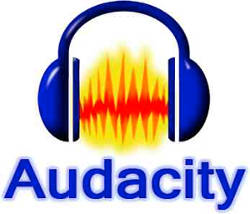 Some music helps and you can find stuff to download for free on this website. You can also find some sound effects there. You may want to edit the soundtrack or music clip, and there is a package called Audacity which can also be downloaded for free. It isn’t easy to use, so be prepared to take some time to learn how. With Audacity you can also create and edit your own podcasts and you can upload them to sites such as Spotify for Podcasters. (other websites for podcasters are available). But if you are going to do a podcast, you are going to need a lot more material than just your elevator pitch. "you are going to need a lot more material" Perhaps you can read an extract from the book, like using the “look inside” feature on retail platforms. Your elevator pitch provides the intro, to “hook” the listener and then the extract reels them in. I think you can see that this is all very time consuming, which is why small publishers want 50% of your royalties if you sign with them. If you are a full-time author you may have time to do all this marketing, but if you have a day job and a family to juggle, then it becomes more challenging. But if your books aren’t selling and you aren’t doing some (or all) of this stuff, then that may be one of the reasons. "But if your books aren’t selling [....] that may be one of the reasons."  Next, I’m going to take a look at your book’s “blurb”. The blurb is the book’s description that appears beneath the cover image on the retail website and will also appear on the back cover of a paperback book – or maybe on an inside page. You will find a lot of blogs about writing elevator pitches, but not nearly as many about writing blurbs. That’s because elevator pitches are mainly considered as being a tool to catch an agent’s eye. If you do that, they will find you a publisher and publishers have people who are paid to write blurbs, so the author doesn’t need to know how to do it. But you are here, reading this blog, which means you haven’t got an agent, nor a publisher who employs a blurb writer. So, you need to know how to do this for yourself. Imagine yourself walking along the street and you happen to glance sideways through a window before looking ahead again to where you are going. After a fraction of a second your brain catches up with your feet and says “Hang on, there was something going on in there, but I don’t know what.” Well, that is the elevator pitch. Now you go back and take a proper look through the window and see someone being attacked with an axe. That is the blurb.  Like the elevator pitch, the blurb has to be concise. If it starts to go on too long the reader will lose interest and move onto another book. But it also has to tell the reader that this is a book that they will enjoy reading, which means it can’t be too short. We found this blog that provides some useful tips. They tie in well with an approach using a fishing metaphor: hook, line and sinker (it’s also the titles of the books in a trilogy by Len Deighton, but that’s another story (groan at bad pun)).  The hook is a short, snappy statement designed to catch the eye, just like the hook catches the fish (that would make the elevator pitch the “bait”). This is the sort of thing we mean: “When you’re up to your backside in alligators, it’s hard to remember that the object of the exercise was to drain the swamp.” That sort of sentence excites all sorts of questions, not least, “what does it mean?”. Thinking about your own book, what sort of short, snappy sentence or couple of sentences could you come up with that would catch the eye? Typical romance ones usually focus on unrequited love. Crime thrillers mention the bizarre nature of a murder. The hook for Operation Absolom is “There’s an old saying in the Army, ‘Never volunteer for anything’. It has been said many times, so why on Earth did Steven Carter ignore it?” Straight away you get two things from that: The book has something to do with the Army, and also the main character’s name. But he obviously volunteers for something that he later regrets – but what is it? If you ask that question, it means you are “hooked” and you will want to know the answer.  The “line” is where you flesh out the plot and characters for the reader. It will be about a paragraph in length, saying enough to keep the interest going, but not so much that you are giving the book away for free. That’s why it needs to be limited a to a paragraph in length – probably no more than 100 words. Returning to Operation Absolom, here’s the “line” we used: “After volunteering for the Army Commandos, Carter finds himself cut off in enemy occupied Norway. It’s winter, it’s cold and the enemy are hunting for him. Can he survive against all these odds? Even if the Nazis don’t capture him, can he find a way back to England?” So, now we know what Carter volunteered for and why he may now be regretting it. We are also setting up the background against which the story is told – Nazi occupied Norway. Finally, we are asking the “cliff-hanger” question – will the hero escape? If the reader wants the answer to that question, they know what they have to do.  For people who have never been fishing - these are "sinkers". For people who have never been fishing - these are "sinkers". People like to read books similar to the ones they have already read and enjoyed. It is a comfort to them – even if it is frustrating to new authors. So, if you can compare this book to well-known books that the reader may have enjoyed, it tells the reader that they might enjoy this one as well. So, the “sinker” is “If you enjoy the stories of (inset well-known author’s name) and (insert another well-known author’s name) then you will love (insert book title) by (insert author’s name). You can jazz that final paragraph up a bit more if you want, by saying things like “tenser than …. more dramatic than …. more tear jerking than ….” etc. But you don’t have to name authors. You can just use a well-known title or even a film or TV series. The blurb for “The Deputy Prime Minister” compares it to “House of Cards” and “The West Wing”. Amazon, who know a bit about book marketing, suggest a word count of about 150 for a blurb. That’s only a target, of course, but it gives you something to aim for.  The whole idea of the blurb is to encourage the reader to “look inside” ie start reading the book, just as they might if they were standing in a bookshop with the book in their hand. If you succeed in getting them to “look inside” you have a better than 50:50 chance of the reader buying the book. If they like what they see, that turns into 100%. Let’s face it, if you have got the reader this far, the only reason for not buying the book is that, based on the ‘look inside’, they don’t like it or they think it is poorly written. Which is the other main reason your book may not be selling. It doesn’t matter how much marketing you do, if the reader doesn’t like that ‘look inside’ bit, they aren’t going to buy your book. But that is for you to reflect on. "the other main reason your book may not be selling" So, those are your two main messages. You can “refresh” your elevator pitch whenever you want, but it’s not so easy to refresh your blurb. Basically you have to republish your book, so taking your time to work on your blurb is time well spent. Why not try it out on your beta readers as well? Send them two or three versions and see which one they prefer. They might even be able to suggest improvements. Like your elevator pitch, your blurb can be used on social media. It is quite well suited for Facebook, for example, with a link to the book’s retail page so the reader can ‘look inside’, or perhaps to a website where they can get a free extract, as discussed in a previous blog. Your blurb can be turned into a video or used as the introduction to an extract in a podcast. If you know how to do it, you could even produce an animation. The limit is your own imagination and skills – and how much you are willing to spend on software packages. We would advise keeping things simple (and free) to start with, then perhaps re-investing some of your royalties later, once you have sold some books. Talking about selling, how much should you charge for your book? That’s what we take a look at next week. If you enjoyed this blog or found it informative, make sure you don't miss future editions by signing up for our newsletter. We'll even send you a free ebook for doing so. Just click the button below.
0 Comments
Continuing the updated series of blogs on marketing that first appeared in March 2021.  Imagine, if you will, that you are a British author, but for reasons we won’t go into, you are living in Australia. Your books are aimed at a mainly British audience. Australians may read them as well (you hope they do), but when you were sitting writing your book, you had visions of leafy Surrey lanes or majestic Scottish glens. Q. You want to use social media to tell your British readers about your new book. When is the best time for you to post on social media? A. When your audience is awake and using social media, of course. Ah, but you are in Australia, which means that when they are awake, you are asleep and vice versa. That is going to present a problem. But that is an extreme example. There are, however, many different times when different people are online and knowing when your audience is online is critical to your social media marketing campaign. 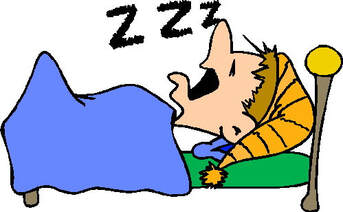 Nurses, who work shifts, don’t get much time for social media while they’re at work, so they use social media when they finish their shift, which could be midnight, 5 am or the middle of the day. But if your target audience includes nurses (eg you write romances set in hospitals), you will want to be posting to social media at the time they are using it. Think about it – when do toy manufacturers advertise their toys? When they know children will be watching TV. Yes, we know that it’s the adults who buy the toys, but it’s the kids who pester the life out of the parents to buy them. When do online gambling companies step up their advertising? During televised sporting events, of course – but also when people are getting back from the pub after having one drink too many and not wanting to go to bed just yet. Excessive alcohol consumption and gambling go hand in hand. The timing of your messages has to be just as targeted. It’s no good knowing who your target audience is and what they are interested in, if you are in bed when they are on social media – or when you are on social media, but they’re in bed. There is a myriad of information on the internet that can help you to identify the best times of day to use different social media platforms and even what days are best and what worst; Saturday isn’t a good day for Twitter, apparently. But Saturday might be a good day if your book is about sport and you want to reach an audience who are on-line chatting about what is happening at similar live sporting events. So, audience targeting, which we covered several blogs ago, comes back into the equation once more.  You’ll have to do some digging (Well, you didn’t think we were going to do it all for you, did you?) And make sure you specify the country in which you are interested. We’re a UK based company but most of the searches came up with results for the USA until I changed the wording of my query. OK, we’ll help a bit. This website shows what times to post in generic terms, but doesn’t give you much insight into such things as age, employment, gender, interests etc. There are plenty of blogs on the subject on that website, dig around a bit and you may find what you are looking for. Here’s a couple of facts for you. A post on Facebook is most read during the first 1½ hours after posting. After that the number of people who will see it starts to dwindle towards zero. 75% of the people who will see it, will view it in the first 5 hours after posting. "That’s why timing is so important." For Twitter, on the other hand, the shelf life (for want of a better term) is only 24 minutes. Yes, 24 minutes after you post your Tweet, fewer and fewer people will see it. On Twitter, 75% coverage is achieved after 3 hours. That’s why timing is so important. 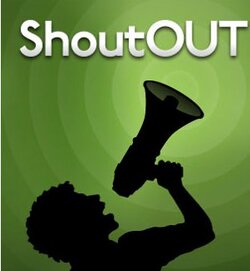 These statistics are vital for engagement. If you want to stay engaged, you have to be there when people see and respond to your post, especially on Twitter. If you go back the next day, or even later the same day, the world has moved on already. That’s why you have to be careful of claims such as “We have a gazillion followers who you can Tweet to”. Very few of that Gazillion will ever actually see your Tweet. A portion (of unknown size) of that Gazillion followers will actually see it and out of that portion, 75% of them will see it in the first 3 hours after posting. That could mean that only ten people from your target audience will see it. "to keep your marketing message “fresh” on social media, you have to keep posting at regular intervals" If your head is starting to hurt, we don’t blame you. Ours is hurting too. What that all means, however, is that to keep your marketing message “fresh” on social media, you have to keep posting at regular intervals. But that means that you have to interrupt your work, sleep, leisure time, etc to keep on posting. 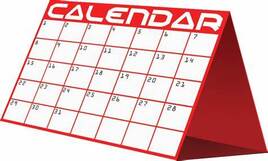 Fortunately, help is at hand. There are websites that will allow you to set up and schedule posts in advance. When the clock ticks over to the appointed time, your post will magically appear on the chosen platform while you continue to snore your head off or play golf or complete the monthly report on the snail population of the Galapagos Islands, or whatever it is you are usually doing at that time of day. Unfortunately, most of these websites charge for their services. This one, Hootsuite, does offer you a 30 day free trial so you can see if it is right for you. But the big advantage of sites like this is that you can sit down for a couple of hours once a week, or even once a month, to schedule all your posts to that one platform in one go, then get on with of your life without having to worry about them. Hootsuite is quite picky about you sending out the same message time after time, but that’s because of their rules governing spam. We like to post in the afternoon and again in the evening, so when we duplicate a post, we schedule it for the evening of the next day, rather than the same day. That seems to get past the rules. Changing the wording for each post also helps.  But you don’t have to rely on Hootsuite entirely. Facebook and Twitter both let you schedule posts and this article tells you how to do it. This blog is posted at midnight every Friday night, but do you imagine we spend our Friday nights with our fingers hovering over the mouse, waiting to click on it? No. Our website has the facility to schedule our blog posts. When this went live, I was probably deep in the arms of Morpheus, or at least draining the dregs from a bottle of wine. So, our big messages this week are:
But, of course, you can’t get into conversations via scheduled postings, so you do still need to spend some time each day “live”, so you can engage that way. Being “live” at the right time of day is important for making sure you engage more deeply with the sort of people who are going to read your books. And remember - engagement is a two way street. It's post and respond, not post and forget. We have talked a lot about “engagement” with your audience, but we haven’t talked much about what actual messages to send them, so that’s where we will start next week. If you have enjoyed this blog, or found it informative, then be sure not to miss future editions by signing up for our newsletter. We'll even send you a free ebook for doing so. Just click the button below. Continuing our series of marketing blogs, which were first posted in early 2021.  While this blog starts off talking about blogging, it moves onto other topics later, so don’t be put off if blogging is never going to be your thing. As discussed last week, writing a blog is one of the ways that you can engage with potential readers in your target audience. So even if you aren't planning on blogging right now, it may be something worthy of your consideration. But we’re not just talking about written blogs like this one. It also covers things like videos on YouTube, Instagram and Tik-Tok. If you are trying to engage with a young audience, you are going to have far more success with those than you are with the written word. There are also podcasts, which are audio blogs and have a considerable following of their own, especially among people who spend a lot of time driving. So, anything you read here about blogs, transpose to those other media as well. BTW, recording a reading of a chapter of your book and posting it as a podcast is a great way of generating interest. What is a blog? Time to look in the dictionary. I came across this definition, which is good enough for my purposes: “a regularly updated website or web page, typically one run by an individual or small group, that is written in an informal or conversational style.” "What should your blog be about?" So, what should your blog be about? Lord Reith, the first Chairman of the BBC, said (long before the www was a twinkle in Tim Berners-Lee’s eye) its purpose was to “Inform, educate and entertain”. We couldn’t put it better ourselves. That is what your blog should aim to do. You can do just one of those three things or any combination of them. We hope this blog covers “educate” and “inform”, but if you are entertained as well, that’s a bonus. The important thing is that after reading our blog, readers don’t feel they have wasted their time. 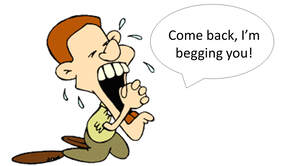 If people like your blog, they will come back again for the next one. They may even look forward to the next edition eagerly. And if they are doing that, they are almost certainly going to be interested in anything else you have written. They may even sign up to your email list so that you can email them and tell them when the next blog has been posted – but be careful not to start spamming people. That’s a quick way to lose friends and followers.  The “tone” of your blog is very important, it says a lot about you and affects the way readers will perceive you. If your tone is too stiff and formal, then you will come across as “stuffy” and it may be assumed that your books will be stuffy too. On the other hand, if you are too chatty and informal, people may not take you seriously enough and, therefore, they may not take your books seriously. We’d be interested in hearing from you about what you think of our “tone”. Is it right for what we are trying to do? Is it too stiff and formal or is too laid back and relaxed? Or, is it something else? Feel free to use the comments section to let us know what you think. We have talked already about what interests, other than reading, your target audience might have and that is one thing you can use in your blogs. If your target audience is likely to be interested in dogs, then you can blog about dogs. If they are likely to be interested knitting, you can blog about knitting. If you have done your homework on your target audience, you will probably have come up with a list of things they may be interested in and you can blog about most of them, because you are interested in them too. We have a list of other possible blog topics and you can download it at the bottom of this blog.  Where can you post your blog? There are a number of websites that will allow you to host a blog for free. Some of them might try to flog you a range of other services, such as a full-blown website, but they will let you post your blogs as well, so that’s the important thing. We Googled “free blog hosting” and came up with this list, which also happens to be a blog (though not by us). Is there anything that you shouldn’t blog about? 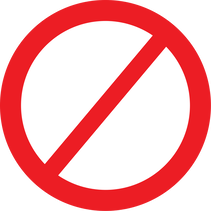 You are trying to make friends and there are two things that will lose you friends quite quickly: politics and religion. To that I might add climate change, veganism, gender issues, conspiracy theories and a few more. I once read the following Tweet “If I’d known that Val McDermid (a popular Scottish crime writer) was a socialist, I’d never have bought any of her books”. OK, that’s a particularly extreme viewpoint, but not untypical of the sort of narrow mindedness that exists. Venture into those fields if you feel you must, but make sure they aren’t minefields. It doesn’t matter how open-minded, reasonable or rational you think you are being; you are going to alienate someone. There are times when blogging on those sorts of issues is justified. "This isn't a hard and fast rule." If you have written an exposé of a political scandal, then it may be OK to blog about politics. This is particularly true if your book is aimed at people with a specific political perspective. If your books are religious themed, then you might be justified in blogging about religion. Just be careful, that’s all we are saying. You took a lot of trouble to identify your target audience, so don’t throw it away by alienating them with one ill-advised rant about Brexit, the Pope or Greta Thunberg. You are entitled to your opinions, but not everyone will share them – even in your target audience. And please remember that once you have posted something on a blog it is there forever and, if it's a controversial view, it could come back to haunt you.  It is time consuming to write blogs and that is enough to put some people off taking that route. So, it’s a good job it isn’t the only way to engage with your potential audience. There are also chat groups and discussion forums. One of the best known of these is Mumsnet so I’m going to use them as my model, even though I’m not a Mum (I am a dad though). These groups offer the opportunity to discuss a wide range of topics that are of common interest. It is probable that if you try to plug your book there you will get kicked off, but a popular topic for discussion is “what to do during maternity leave” (as if raising a child wasn’t enough) and that is where you can drop into the conversation that a good way of using time is to write a book. You can also discuss books by other authors quite legitimately, under the appropriate thread(s). That at least allows you to let it be known that you are interested in books. "if you try to plug your book there you will get kicked off" The aim of using these chatrooms is to attract new followers to your other social media channels, where you can and do plug your books. And that is what happens when you engage with people. You turn them into friends and friends stay in touch. I’m a keen golfer myself. In researching this blog (yes, we do that), I discovered that there are some golf forums that run like Mumsnet. We also happen to publish a book about golf. Guess who’s going to join a couple of those fora as soon as they have enough time between writing blogs, promoting books and editing. 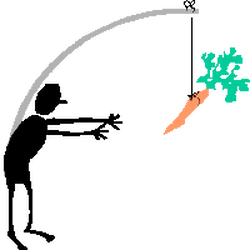 Now onto another popular way of engaging with your readers. The “freebie” or “teaser”. It is another strand of “engagement”, but one that is a bit more direct in its approach. The idea of the teaser is for potential readers to look at your work before they buy it. This ability already exists on some retail platforms with “look inside” or similar features. But they rely on you having a manuscript (MS) uploaded to the platform and on sale. What if you are still a few weeks away from getting the final version ready for launch? You want to start engaging your audience’s interest, but the book isn’t yet ready for publication. There is a facility on many retail platforms for customers to pre-order. This is great for getting a boost up the sales rankings on Amazon and other sites. If your books have been pre-ordered, then all the pre-orders get counted on the day the book goes “live”. That can catapult you up the sales rankings, which means that your book might feature in the “best-sellers” list for the day which, in turn, can lead to more sales. This is known as “momentum”. "That can catapult you up the sales rankings" And the best part is that you don’t have to have the final version of the book ready when you set up the pre-order. You can set the pre-order up a year in advance. That’s great for well-established authors who already have a loyal following eagerly awaiting the next book but, for you, a month or two in advance is all you need. But why should anyone pre-order a book when they don’t know if they will like it? Because if there’ no MS uploaded, there’s no “look inside” to read.  Because you have posted a teaser elsewhere and that has whetted their appetite. We encourage our authors to do this – and it works. One of our authors books got to 300 in the Amazon sales rankings for their book on the day it was released, thanks to pre-orders. OK, it isn’t quite Harry Potter – but it encouraged more sales on launch day. What is best practice for teasers? Well, whatever you offer has to engage the reader, so it really has to give them a flavour of what the book is about. If the first chapter or the first 10% of the wordcount does that, then that’s the bit to use, but you may want something a bit more dramatic, a bit more emotional or a bit more exciting, in which case you may want to cherry-pick from elsewhere in the book. You might even assemble a collage of extracts from different parts of the book – but for goodness sake don’t give away the ending. But the most important part is the last line of the extract. It has to be a “call to action”. This will include a link to the specific page on the website where the book can be bought or pre-ordered. 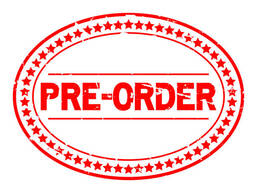 Something like “We hope you enjoyed this extract. You can find out more about “Book Title” by “Author Name” here. “Here” being the link to where the book can be bought or pre-ordered. Note that the call to action didn’t use the words “buy”, “order” or “pre-order”. This is because people may feel pressured by those words. You are just being helpful by pointing them to the place where they can find out more. If they click the “purchase” button once they get there, it must be because they have made up their own mind to do that. Of course, giving people a teaser relies on having somewhere they can download it, which usually means a website, but some social media does allow you to post things that can be downloaded. Here at Selfishgenie we have a specific Free Stuff page where our authors can post their teasers and we promote them through our social media and they promote them through theirs. There is also a website called Wattpad where you can post extracts (or even complete books) and link them to other social media or websites. In last week’s edition of this blog, we used an almost throwaway line when we said that YA readers are mainly online between 7 and 10 pm and that’s when you may be drinking your cocoa and watching Corrie and Midsomer Murders. But it isn’t such a throwaway. Reaching your audience at the right time of day is critical and we’ll be taking a closer look at that in next week’s edition. See – we even use teasers when we’re blogging. If you enjoyed this blog or found it informative, be sure not to miss next week's edition by signing up for our newsletter. We'll even send you a free ebook for doing so. Just click the button below.
Continuing our re-run of popular marketing blogs first posted in February 2021  Strategy – it’s a big scary word used by clever people who earn lots of money. No it isn’t. Strategy isn’t that complicated, at least not as a concept. Really, all it means is knowing what result you want and working out a way to achieve that result using the resources you have available to you and then knowing when you have achieved your result. We already know what result you want – you want to sell your book. "social media, which is a resource you can use for free" This weekly blog is discussing the ways that you can achieve that result using social media, which is a resource you can use for free (or, at least, quite cheaply). And you will know if you achieve your results if your book sales increase. Actually, there are some other things you can measure along the way to tell if you if you are heading in the right direction, but we’ll cover them later.  You can write your whole social media marketing strategy in five bullet points or less. Here’s ours:
As you can see, it isn’t exactly rocket science. There are other layers of actions below those five, but as someone once asked – how do you eat an elephant? The answer is: one bit at a time (apologies to vegans and wildlife preservation activists – but it’s only a metaphor). "each audience is unique," Last week we looked at identifying the target audience for your book(s), but that only takes your strategy to the first bullet point. Because each audience is unique, we have to engage with them in unique ways. This is why blasting out generic Tweets doesn’t work. You need to understand the “organic reach” of your social media marketing channels to get the best out of them. Let’s take Young Adult (YA) fiction as an example.  YA fiction is aimed at readers in the 12 to 18 age group. They are social media savvy and they are usually on the latest and trendiest social media platforms. If your idea of social media is Facebook, then you are onto a loser with the YA audience. Only 51% of teenagers who use social media use Facebook, the second smallest group after the over 65s. Even Twitter is a bit old hat for them, taken over by oldies who only want to argue about politics. "Even Twitter is a bit old hat for them" But there is more to it than that. YA readers have to go to school and they aren’t allowed to use their phones or other devices during school hours, except for schoolwork. The best time to engage with YA readers is going to be during the evening, typically between 7 and 10 pm. But that’s when you are sitting down with a mug of cocoa, watching Corrie and Midsomer Murders (TV programmes may vary by nationality). When we talk about the organics of social media, we are really talking about the way your messages “grow” and get noticed. It’s like applying fertiliser to a plant. Put it down at the right time and in the right place and the plant will flourish. But put it down at the wrong time and the rain will wash it away and the plant will wither and die and if you put it in the wrong place it won’t get to the roots of the plant, with the same result.  YA is a good example of this, because young people love sharing things on social media – far more so than their elders. So hit the YA audience with the right message at the right time and it won’t just reach the ones who follow you, it will be shared with all their friends as well. And then their friends will share it and so on and so forth. If you do it right, you may even “go viral” and your message will be seen by millions of YA readers around the world. But on the other hand, the YA audience is the most challenging to reach because they respond best to visual images – particularly video. That’s why Tik-Tok is currently the fastest growing social media platform on the planet. But how do you get a message out about your books on Tik-Tok? We’re not going to answer that question - yet.  The first plant you have to nurture and grow is your own social media presence. If you are an author using Twitter and you have only 100 followers – you haven’t got a social media presence. Until your followers number in the thousands, probably tens of thousands, your social media presence isn’t going to help you at all. This is when people get tempted to buy “followers”. Well, it’s your money and if you want to waste it, that’s your privilege. Because most paid for followers aren’t real people, they are bot (robot) accounts. They only exist as a username. And bots don’t buy books. "If you are an author using Twitter and you have only 100 followers – you haven’t got a social media presence." The cleverest of these bots re-Tweet other people’s Tweets, just so they can appear more human. Strangely, people actually follow some of these bot accounts, including other bots, so you have bots following bots. Crazy, isn’t it? You know those bios that say “Follow me and I’ll follow you back”? How do you know you aren’t following a bot? A lot of bot accounts are used to bombard people with advertising. OK, I know that sounds hypocritical when we’re blogging about social media marketing, but at least we’re real people (honestly – we are!). 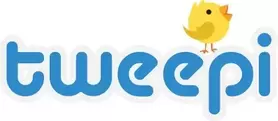 There is an app called Tweepi which will help you to gain followers over time. It’s a bit of a blunt instrument, based on the idea that if you follow a lot of people, some of them will follow you back. You have to pay to use some of their features, but you can also get a free account with a limited range of features, which is enough to get you started. At the end of this blog you'll find a guide written by someone who has used Tweepi to gain thousands of followers, so please feel free to download it. If you are prepared to spend twenty minutes a day on Tweepi you can probably add about a hundred new followers a week to your Twitter account. The real secret, however, is to attract more followers because of the stuff you post on social media. This is your “engagement strategy”. Let’s say that when you identified your audience characteristics (the homework we set last week), you thought that many of your audience would probably be dog lovers. So, if you Tweet lots of things about dogs, anyone who likes dogs is going to be interested in reading your Tweets.  Not only will they read your Tweets, but they may re-Tweet (RT) the best ones. That will bring you more followers. But, more importantly, if your Tweets get lots of “likes”, they are more likely to appear at the top of peoples’ Twitter feeds, which makes them more likely to be seen. That’s how social media algorithms (horrible technical term) work these days. If your Tweets are the first ones that are seen, they are more likely to be read and they are more likely to be RT’d and because of the number of likes, they are more likely to bring you new followers. That’s organic growth in a nutshell (groan at bad pun). If you are good at it, you will soon have more followers than people you follow yourself – just like Katie Perry or Steven Fry.  The whole point about “social media” is that it is social and that means engaging with other people first, taking an interest in what they have to say. So, the other thing you can do is engage in conversations about other people’s posts. If you are engaged, then other people in the conversation may find what you have to say interesting enough to want to follow you and, of course, you want to follow them. It’s another way of getting organic growth. "The whole point about “social media” is that it is social" You will notice that I haven’t mentioned promoting your books. It’s OK to do that, but Tweet about dogs (or whatever) far more frequently. A ratio of 10:1 is probably about right. You also have to Tweet everyday if you can. People follow accounts if they are obviously active. An account that hasn’t Tweeted for more than a few days is probably a bot account or is engaged in some sort of scam and is just trying to identify new victims. These last few paragraphs have mainly been about Twitter and that is because it is the easiest platform to demonstrate the points we wished to make. But the same basic rules apply to all the other social media platforms: Facebook, Instagram, Pinterest et al: social first, commercial second. It’s a hard lesson to learn if you want quick results, but if you want to be in this for the long haul, it is worth taking the time. And, more importantly, if you want to see your sales growing, you have to be in it for the long haul. That doesn’t suit the generations who are used to “instant gratification”, so they have to learn to be patient. If you have only written the first chapter of your book, or even the first paragraph, then now is the time for you to start engaging with your audience. That way you will already have an engaged audience by the time your book is published. But it’s never too late, so even if your book has been out for years, you can start today. You will probably have worked out by now that this is all very time consuming. Which is why some Indie authors choose to use (small) publishers to do this for them. But not all small publishers are equal, as I explained in a previous blog. The accounts and websites that offer to send out Tweets for you aren’t willing to spend the time to do it right. If you pay for someone to Tweet about your books (probably using a Tweet that you had to compose in the first place), that’s all they’ll do. There will be no attempt to establish any sort of social engagement. OK Selfishgenie Publishing, put your money your money where your mouth is - what are you doing to engage with your audience?  You’re reading this blog, aren’t you? That is part of our engagement strategy. We identified the fact that if you are an Indie author, you are going to be interested in knowing how to market your books. If you are an author then, almost by definition, you are a reader too. So, we’re publishing this series of blogs so that you will engage with us and we can engage with you. You might take a look at our books while you’re here or you might not, but that doesn’t matter. It is the engagement that matters. In previous blogs we have used some of our books as examples of what we were talking about. It comes as no surprise (to us) that our sales for those books went up a little bit after those blogs were posted. I mentioned at the top of this blog that there are some measurements that will help you work out whether your strategy is working or not and social media provides some easy measurements for you to use: Number of followers, number of RTs and number of likes. If those numbers keep going up, then your engagement strategy is working. Some sites offer even more “analytics”, such as where in the world people engaged and your most popular Tweets/posts. You might want to take a look at them to see what they might tell you and what you can learn from them. For us here at Selfishgenie we also measure “number of visits to our website”. When you clicked on the link to get here, you showed up on our metrics (more jargon, it means the way we measure success). Do you read a lot of blogs? Many are part of someone’s engagement strategy. Don’t worry about that though. The important thing is whether or not you find the blog interesting or entertaining. 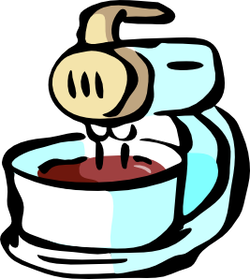 In terms of the “marketing mix”, engagement on social media falls under two different Ps: Place and Promotion. Place is the “channels” that are used: FB, Twitter et al and Promotion is the messages that you put out to help you engage with people. Next week we’re going to take a more in depth look at blogs and also look at using extracts and teasers to promote your work. We hope you have found this blog entertaining or informative - or both. If you want to be sure not to miss the next edition, just sign up for our newsletter. We'll even send you a free ebook for doing so. Just click the button below.
|
AuthorThis blog is compiled and curated by the Selfishgenie publishing team. Archives
June 2025
|
||||||||||||
 RSS Feed
RSS Feed